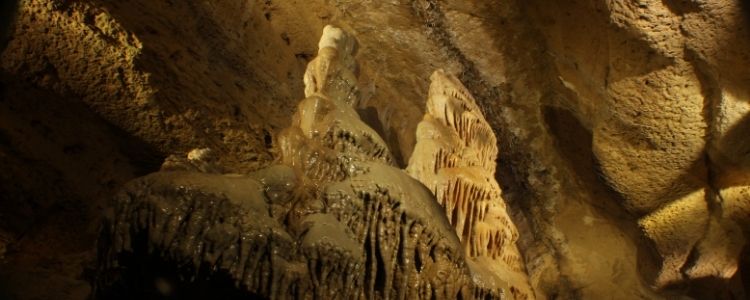The flowstone in the North Cave and the Painted Waterfall form when water enters the cave and flows over the surface of the floor below. Without a focal point to build on, the calcite crystals cover the underlying limestone rubble continuously. It looks like a smooth, slippery, soft layer but flowstone is gritty like fine sandpaper and as hard as solid rock. The shape of flowstone is as varied as the surfaces it covers.
Dripstone and flowstone can form in the same space. The Beauty Rooms are the perfect location to see multiple examples of each. Rimstone dam flowstone on the cave floor, ribbon stalactites so thick they hang like drapery, and tiny soda straws forming delicate colonies in the recessed walls create a masterpiece of natural beauty. There are also thick stalactites and stalagmites that have grown together to create solid columns.
Cave of the Mounds has earned the nickname of the Jewel Box of America’s Show Caves for the variety and delicacy of formations. Observant guests notice the similarities and differences between areas of the cave. They spot the many shapes and colors throughout. What will you notice on your trip underground?

